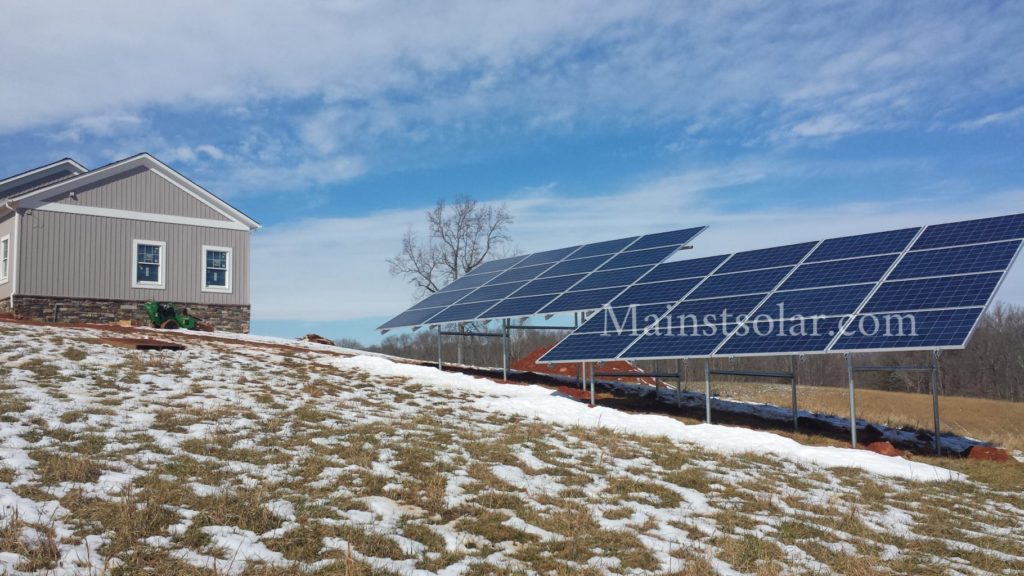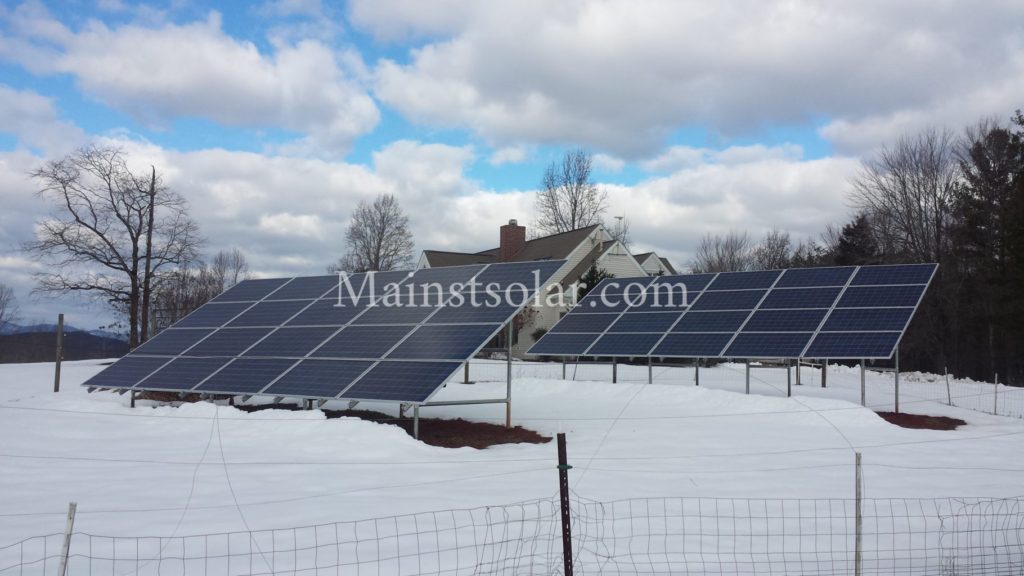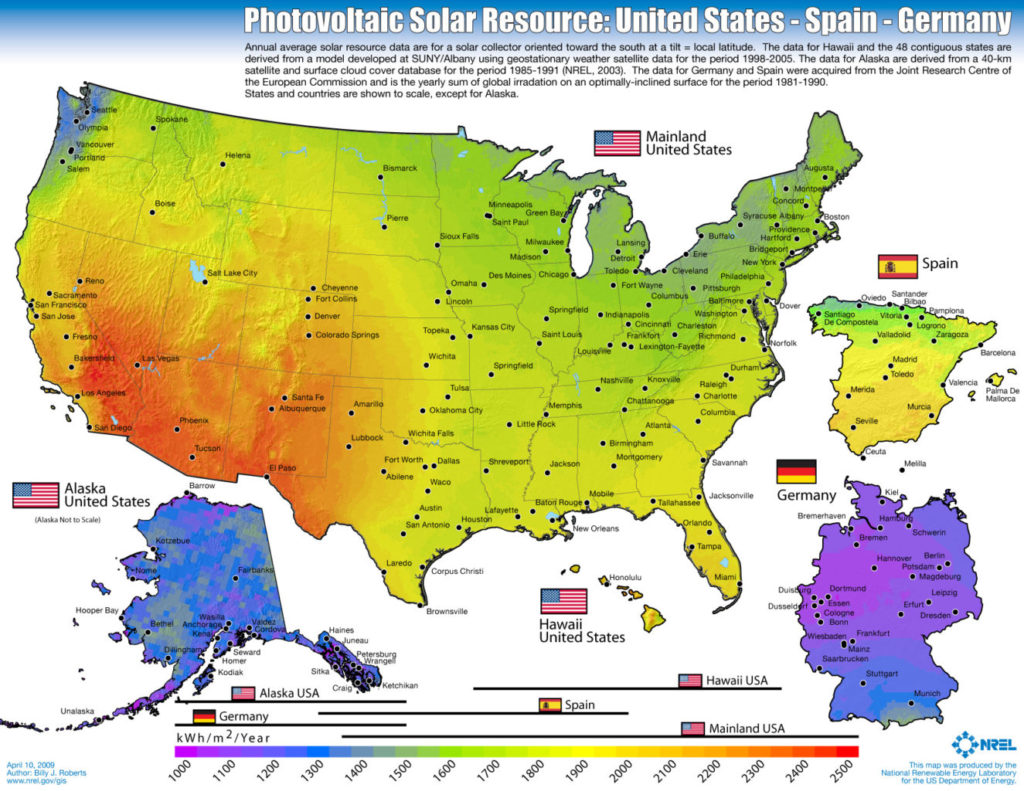
If you’re lucky enough to live in one of the parts of the state that’s expected to have a white Christmas this year, then winter in Virginia can bring stunning beauty. It’s hard to find a better view than the endless peaks of the Alleghenies or the majestic Blue Ridge covered in snow.
Some of our most attractive ground-mounted solar arrays look their best in winter against a backdrop of white mountains.
What makes those solar panels even more attractive is that, with proper installation and a little bit of maintenance, photovoltaic panels can keep producing power right through the snowiest and shortest days of winter.
Of course, shorter days mean less sunshine, which means less power from solar panels each day. And solar panels won’t produce any power at all if they’re covered with snow.
Snow in Virginia is a bigger deal depending on where in the state you live. For example, in Lynchburg you’ll have about eight days of snow each year on average for a total snowfall of 16 inches for the season. Roanoke gets a bit more — nine days of snow with 18.5 inches per winter.
The big snow comes in the West and Southwest. People who live in Wise, for example, have 31 snowy days that drop a total of 52.6 inches over the course of the winter.
But you might be surprised to hear that in one way winter is actually better for solar panels. Like many electronics, photovoltaic systems function more efficiently in colder temperatures than they do in heat.
In fact, since solar panels produce power from light and not heat, a solar array can give you power all winter long, helping offset those high winter heating bills.
To get the most power out of solar panels in a Virginia winter, just make sure of three things.
 1. Solar Panels Must be Installed Properly
1. Solar Panels Must be Installed Properly
The panels must be angled enough to allow most snow to slide off on its own. In northerly climates, a 40 degree angle may be necessary but in Virginia, 30 degrees is usually plenty.
Also, panels should not be placed where snow will accumulate in a kind of dam at the bottom of panels, where it will block sunlight. Snow needs to be able to slide off the front of the panels and completely away, preferably completely off the roof or other structure that’s supporting the solar array.
If you want peace of mind, we don’t recommend trying this yourself. Instead, hire a qualified solar installer, who will know just how to put up solar panels for your location.
2. High Efficiency Panels Can Make a Big Difference
Modern high-efficiency monocrystalline panels can be up to 22% more efficient than photovoltaic panels using older technology. On short winter days with less sunlight, more efficient solar panels will squeeze more power out of limited light.
The best PV panels today absorb light from all angles and use non-reflective glass, which means they absorb the highest amount of light instead of reflecting it back like a mirror into the surrounding area.
High quality panels cost more per panel, but you may need fewer panels to get the same amount of power as if you had used cheaper panels. An experienced solar installer can recommend brands of solar panels that will give you the most power at the lowest cost depending on where you live.
3. Keep Panels Clear of Snow
As I said above, solar panels don’t produce power when they’re covered in snow. Fortunately, in most parts of Virginia, heat from the sun will cause the average snowfall to melt off of solar panels early in the day.
Snow that doesn’t slide off on its own should be cleared from panels if possible. We don’t recommend that you go up on your roof with a broom, however. If you damage your panels, that won’t be covered by the manufacturer’s warranty. Also, we don’t want you to risk falling and hurting yourself.
If you do need to clear snow, AccuWeather recommends bouncing a tennis ball off of your solar panels to get the melting process started. “The small divots created by the tennis ball help begin the snow shed process and allow sunlight to reach the modules and begin converting energy.”
Solar Power Works Well Even with Limited Sun
As EnergySage points out, you don’t need a lot of sunlight to get good production out of home solar power.
For evidence, just look at the places that have a lot of solar power installed. Sure, sunny climes like California and Arizona stand out. But so do northerly states with less sun, including Massachusetts and New York.
Look further afield, and you’ll see that the nation of Germany is one of the world’s leaders in solar power — and its sunshine is about the same as what you’d get in the state of Alaska. See the graphic below.
Fortunately Virginia is on the sunnier side — with about as much light as sunny Spain, as the graphic also shows. And winter may be the best time to shop for solar at your home. Since the solar market tends to slow down in the colder months, solar installers can respond more quickly and may be willing to offer better pricing.
Once you get your Christmas shopping done (and check out these 5 solar-powered gifts that are actually useful), why not look into getting solar panels for your home this winter?
You know you’ve wanted them for a long time. And during winter, you could just beat the rush and get a good deal.
Contact us for a free solar home assessment. After looking at your place we’ll let you know if it’s right for solar power. And as long as the roads are clear, we’ll come out even if it’s cold and snowy outside.
— Andrew Brenner, Main Street Solar






